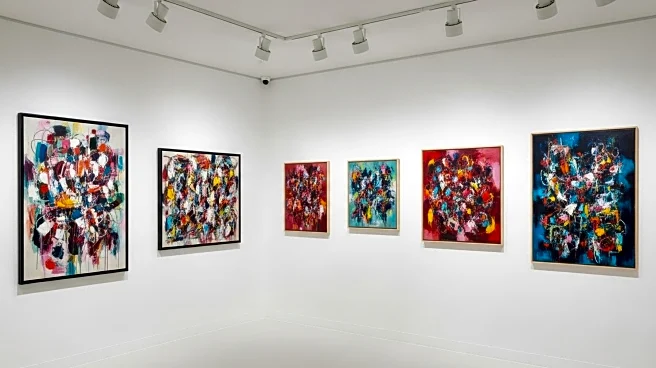What's Happening?
A recent study published in Nature introduces an improved YOLOv8 model, named DAL-YOLOv8, to address challenges in detecting Cantonese embroidery images. The study constructs a dedicated dataset of 1860 images, augmented to 9300 through techniques like
horizontal flipping and Gaussian noise addition. The model incorporates DWConv24 to reduce computational costs, a C2f-AFE module for enhanced feature extraction, and an LSKA25 attention mechanism to expand the receptive field. The WIoU26 loss function is used to mitigate the impact of low-quality samples. The study aims to improve recognition accuracy under complex backgrounds and significant interclass morphological variation.
Why It's Important?
The development of DAL-YOLOv8 is significant for preserving Cantonese embroidery, an intangible cultural heritage. By improving detection accuracy, the model aids in cataloging and protecting these cultural artifacts. The enhanced model can benefit industries involved in cultural preservation and digital archiving, providing a tool for more efficient and accurate documentation. Additionally, the advancements in object detection technology can be applied to other fields requiring precise image analysis, potentially impacting sectors like security, manufacturing, and digital media.
What's Next?
The study suggests further exploration into the application of DAL-YOLOv8 in other cultural heritage preservation efforts. Researchers may focus on refining the model to handle more complex backgrounds and diverse object categories. Collaboration with cultural institutions could lead to broader adoption of the technology, enhancing digital preservation efforts globally. Future studies might also explore integrating the model with augmented reality applications to create interactive experiences for cultural education.
Beyond the Headlines
The ethical implications of using advanced detection models in cultural heritage preservation include ensuring the technology respects the cultural significance of artifacts. There is potential for long-term shifts in how cultural heritage is documented and shared, with digital models offering new ways to engage with history. The study highlights the importance of balancing technological advancement with cultural sensitivity, ensuring that digital representations do not overshadow the original artifacts.













